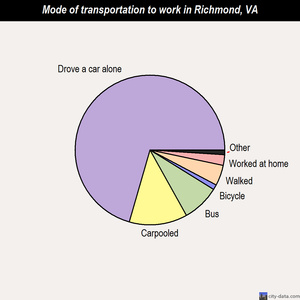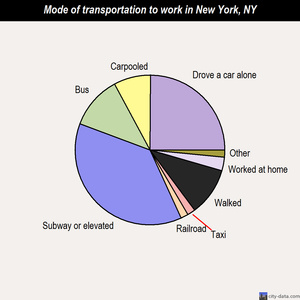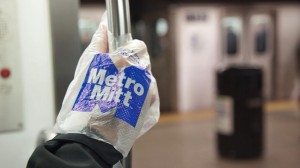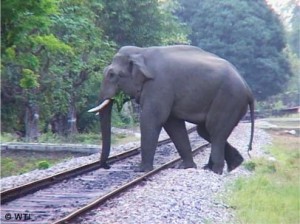It’s Monday morning and you step out of your house to head to work for the day. What’s your mode of transportation? Do you hop in your car and drive alone? Do you walk to the nearest subway station and head into the city that way? Using www.city-data.com, I found pie charts displaying the different types of transportation people use to get to work every morning in US cities. Below is a comparison between Richmond, VA and New York City, NY.
Over the years, I believe people in most US cities, including Richmond and New York, will cut back on driving a car alone to work. Cities could then use large parking lots and other cement areas as places for parks with trees, plants, and wildlife. The benefits of creating more green spaces within cities should outweigh the costs of using alternative transportation modes instead of a car. What are your thoughts on the issue?




